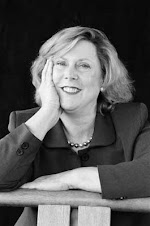Known for their Carmenere, this winery treated our group of writers-photographers-WineExperts sponsored by WineBow to an unparalleled experience at their property in the Apalta area, in Chile’s Colchagua Valley 160 km southwest of Santiago, with vineyard elevations of 650-1600 feet.
 |
| The truck to the top |
Our experience began with our boarding something like an old army truck, holding on TIGHT, and chugging up the steep slopes to the top of the property. Not only were the views fantastic, but we tasted grapes from Block 23 while sipping their Carmenere on the mountaintop.
How do you decide when to harvest grapes over a terrain as varied as this? It rises from 200 m to 475 meters above sea level. So many microclimates, so many different blocks at different elevations and facings, so much to lose if you chose to harvest too early or two late. Winemaker Felipe Tosso told us his technique: first, he skips breakfast (well, maybe some coffee…). Then he horserides, motorbikes, or 4-wheel drives up to the block that seems to be getting ready. He takes 10 grapes from nearby clusters, sucks the juice, mouth-macerates the skins, and decides. Go or no go. Whatta guy!
Tosso’s fervor is fueled by his belief in the country’s wines: “Chile is producing exceptional wines and covers a scope of grape varieties that may surprise the world: great aromatic Sauvignon Blanc, round and fruity Syrah, unique Carménère and some New World competitive Pinot Noir,” he says.
Tosso and his crew bumped us back to their wonderful new tasting room where we finally seated our shaken and dusty selves and were treated to an interesting tasting. Ventisquero was founded in 1998 and now owns vineyards located in some of Chile’s best wine regions -- in the valleys of Colchagua, Casablanca Coastal Maipo, and Leyda.
“La Roblería”, the property in Apalta, Colchagua, is 170 acres of vineyards planted in 1999. Apalta is the source for the Syrah and Carménère grapes used in Viña Ventisquero’s icon wines, Pangea and Vertice.
I loved the Carmenere and Carmenere blends. And of the many other wines we tasted, I most enjoyed the “Root 1” labeled wines, all from the Colchagua Valley, proclaiming their origin from “Original Ungrafted” vines in Viña Ventisquero vineyards: Carmenere, Sauvignon Blanc, Pinot Noir, and Cabernet Sauvignon.
Vertice 2008 is a blend of 51% Carmenere and 49% Syrah. It is a deep ruby red in color, and has aroma of red and black fruits with a hint of peppery spice. Aged 20 months in French oak barrels, it also has notes of vanilla and chocolate. The black fruit and spice flavors come through to the taste, and Vertice has a nice firm structure, and long finish. The winemaker notes that it is ready to drink now, but has excellent cellaring potential for up to 10 years. 14.5% alcohol , $40 USA retail..
Carmenere Grey 2009, a blend of 85% Carmenere, 7.5% Syrah and 7.5% Cabernet Sauvignon; grapes sourced from the Maipo Valley. Winemaker notes say it all: ”Intense aromas of blueberry, blackberry and strawberry, notes of cherry, bitter chocolate, black pepper and nuances of mint and lavender. A full-bodied well-structured wine with firm but ripe tannins and balanced acidity; concentrated flavors lead to a long fruit finish tinged with a hint of spice. 14% alcohol. $20 USA retail
Early in the extensive tasting, we sampled the Root 1 Carmenere 2010. It is 90% Carmenere, 5% Syrah and 5% Cabernet Sauvignon, “The 2010 vintage was a very memorable one,” said Tosso, “marked by the massive earthquake early in the year. The weather was also cooler than usual.” Tasting notes from Tosso: “Intense violet in color with rich ripe aromas of red fruit and vanilla, combined with soft spice notes. A full-bodied and juicy profile with blackberry, cherry and a hint of smoke followed by supple tannins and a strong finish.” 13.8% alcohol. $11.99 USA retail.
It was always enlightening to travel with the group of experts chosen for this trip by WineBow. At this tasting, I was particularly intrigued by the questions asked by Diane Tietelbaum, who with 30 years experience in retail for private clients, consulting for hotels and restaurants, and wine judging, had some contributions to the sales staff regarding pricing level that would be appropriate for the US market.
Finally, to make the experience more real, about midway through the tasting, wines already poured in the glasses showed a small wave pattern. Must have been just a little earthquake. No one else seemed to notice, but then, I live in San Francisco. Happens all the time, and you just get used to the little “Terremotos”...


































